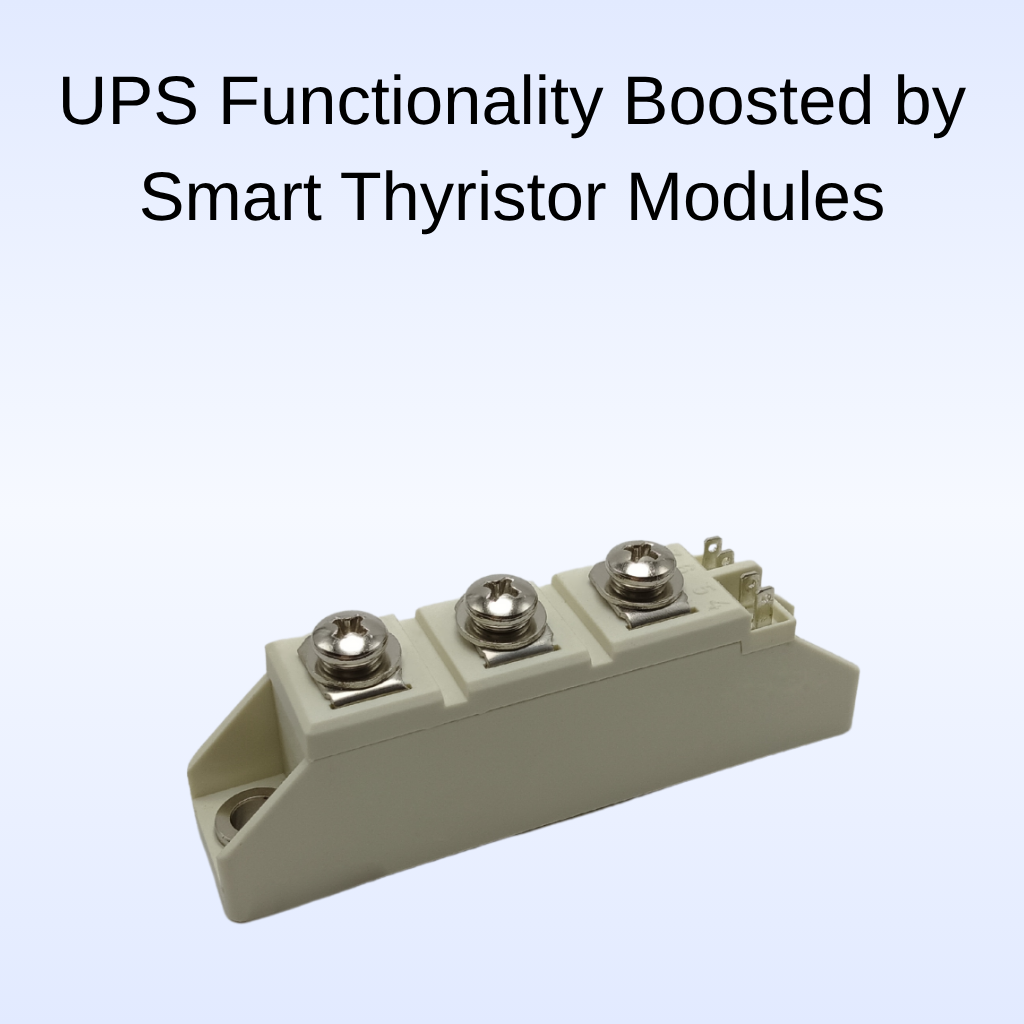1. Introduction: Extending UPS Capability with Advanced Thyristor Modules
Modern UPS systems are no longer isolated backup devices — they are integrated into smart grids, renewable systems, and high-reliability infrastructure. To meet evolving demands, thyristor modules in UPS must offer more than simple switching: they must deliver efficiency, control, and robustness. A module with ultra low VT desalination smart grid High surge current low on‑state voltage industrial phase control dual thyristor module qualities ensures minimal conduction loss and grid interoperability. In battery-interfaced systems, soft-start battery charger temperature control High surge current low on‑state voltage industrial phase control dual thyristor module variants protect against surge and thermal stress. And for systems linked to DC grids or hybrid architectures, HVDC power factor diming High surge current low on‑state voltage industrial phase control dual thyristor module modules add active control and flexibility.
In this article, we examine key UPS subsystem roles: bypass switching, static transfer switching, paralleling, and grid-interactive operation.
2. Bypass & Static Transfer Switches in UPS
2.1 Bypass Path Efficiency
A common function in UPS is to provide a bypass route when internal modules are being serviced or during overload. Using a thyristor module that embodies ultra low VT desalination smart grid High surge current low on‑state voltage industrial phase control dual thyristor module design in the bypass leg ensures that even when bypassed, conduction losses remain low. This preserves system efficiency and minimizes wasted energy.
2.2 Fast Transfer with Surge Tolerance
During a transfer from utility to generated power or vice versa, transient currents or voltage spikes may occur. A soft-start battery charger temperature control High surge current low on‑state voltage industrial phase control dual thyristor module in the transfer path can provide a softened ramp, reducing stress on power electronics and loads. Its temperature feedback capability also helps accommodate thermal spikes during rapid switching.
2.3 Phase‑Control for Seamless Switching
Integrating HVDC power factor diming High surge current low on‑state voltage industrial phase control dual thyristor module in static switch circuits enables phase-angle control during switching operations. This lets the UPS smoothly align phases and reduce transient disturbances during mode shifts.
3. Paralleling & Load Sharing Strategies
3.1 Matching Conduction Paths
In large UPS systems, multiple modules often operate in parallel. Having modules with ultra low VT desalination smart grid High surge current low on‑state voltage industrial phase control dual thyristor module ensures that each conduction path has minimal voltage drop, which facilitates better load sharing and balanced currents.
3.2 Surge Robustness in Paralleled Operation
In paralleling, one module might experience loading or switching that triggers surges. A soft-start battery charger temperature control High surge current low on‑state voltage industrial phase control dual thyristor module can help mitigate local surges or prevent cascading activation by softening transitions. The module’s thermal control aids in avoiding hot spots when load distribution shifts.
3.3 Control of Power Flow
Using HVDC power factor diming High surge current low on‑state voltage industrial phase control dual thyristor module within parallel network branches allows active control over how each branch draws or supplies power, which is useful during load variation, grid support, or redundancy mode.
4. Grid‑Interactive & Smart UPS Functions
4.1 Demand Response & Reactive Support
UPS systems increasingly participate in grid stabilization via demand response, reactive support, or power quality services. Modules with ultra low VT desalination smart grid High surge current low on‑state voltage industrial phase control dual thyristor module capabilities allow precise modulation with minimal efficiency penalty, enabling the UPS to act as an active grid participant.
4.2 Dynamic Charging & Renewable Coupling
When UPS is integrated with solar, wind, or battery assets, soft-start battery charger temperature control High surge current low on‑state voltage industrial phase control dual thyristor module designs facilitate controlled transitions between sources and avoid surges when coupling DC or AC networks. Their temperature control ensures stable conduction behavior under varying conditions.
4.3 HVDC-Enabled Flexibility
In systems that combine AC and DC distribution (microgrids, data centers), including HVDC power factor diming High surge current low on‑state voltage industrial phase control dual thyristor module in the UPS architecture allows bidirectional current flow, active power factor control, and controlled dimming of loads to optimize efficiency and grid interaction.
5. Summary & Implementation Notes
The role of thyristor modules in UPS has expanded from static switching to dynamic control, load sharing, and grid interaction. Employing modules with ultra low VT desalination smart grid, soft-start battery charger temperature control, and HVDC power factor diming features offers:
Lower losses and heat generation
Better transient immunity and surge tolerance
Smarter load control and grid support
Enhanced reliability in parallel or mission-critical configurations
READ MORE:
A Deep Dive into Selecting Thyristor Modules for UPS Applications
Key Considerations When Selecting Thyristor Modules for UPS Systems
How to Choose the Right Thyristor Modules for UPS Applications: A Comprehensive Guide
How to Choose the Right Thyristor Modules for UPS Applications
Smart Thyristor Modules for UPS Prognostics and Load Shaping
Thyristor Modules in UPS: Fault Isolation and Ride-Through Support
Thyristor Modules for UPS Diagnostics, Bypass and Load Control
Mission-Critical and Specialty Use Cases of Thyristor Modules

